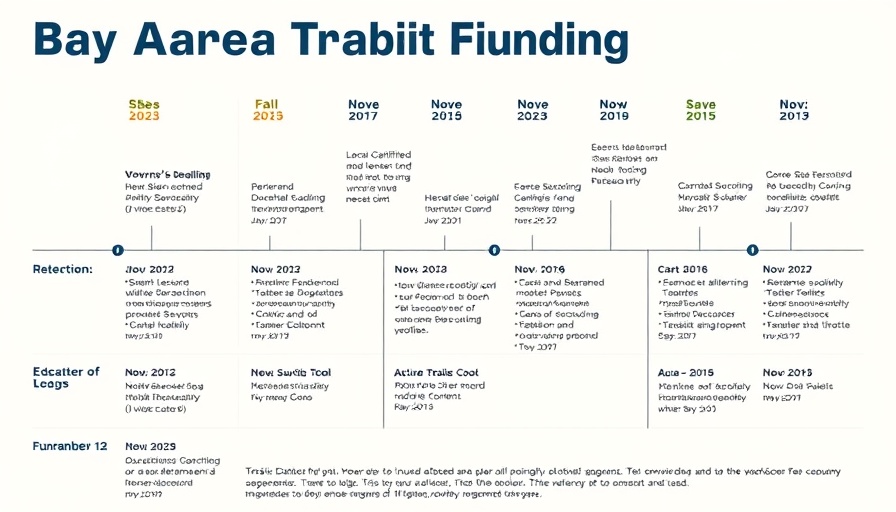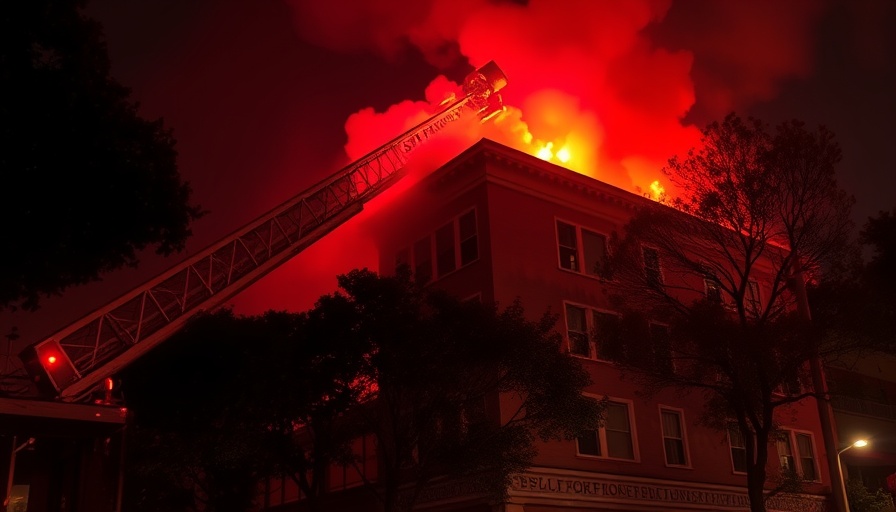
A Historic Moment for Bay Area Transit Funding
On October 13, 2025, Governor Gavin Newsom signed Senate Bill 63, marking a significant milestone for public transit in the Bay Area. This pivotal legislation—dubbed the Connect Bay Area Act—authorizes a ballot measure scheduled for November 2026, aimed at securing vital funding for our local transit systems through a sales tax. Should voters give it the green light, an estimated $1 billion annually would be allocated towards maintaining and enhancing the operations of transit agencies such as BART, Muni, and Caltrain.
Why is SB 63 So Important?
As part of ongoing efforts to bolster the Bay Area’s public transportation framework, SB 63 is essential to avert potential service cuts that could radically alter the landscape of our daily commutes. According to a recent analysis by SPUR, without the funding secured by this measure, transit services could face drastic reductions—BART alone may have to trim up to 90% of its scheduled trains. This does not merely threaten the efficiency of transport but strikes at the very heart of our commitment to sustainable urban life.
The Path Forward: Signature Gathering Begins
The next step for advocates involves collecting 240,000 signatures to qualify the initiative as a citizen's measure, requiring only a simple majority vote to pass. By opting for this route, organizers are showcasing their commitment to grassroots mobilization. The signature collection is set for January, with a July deadline looming—a testament to the urgency surrounding this endeavor. As community advocates like Transform's Zack Deutsch-Gross amusingly noted, the signature goal “is less than one-third of the population of SF,” making it an ambitious but achievable target for community engagement and activism.
Understanding the Measure’s Nuances
The proposed tax, primarily set at ½ cent for most counties, will allow San Francisco to adopt an even higher rate if deemed necessary to support Muni operations. This tax measure seeks to benefit a coalition of transit agencies—Alameda and Contra Costa transit districts, Caltrain, and more—highlighting a collaborative approach to solving regional transportation challenges. Furthermore, it obligates the Metropolitan Transportation Commission (MTC) to conduct a thorough efficiency review of these services, a move that advocates say will ensure the funds are used effectively.
Linking Transit to Community Growth
This initiative is not just about maintaining service levels; it’s about planning for future growth and sustainability. The governor's signing of SB 63 coincides with additional legislation, including SB 79, which promotes dense housing development near transit arteries. The integration of housing and transportation not only encourages ridership but also enhances community connectedness and local economies.
The Emotional and Human Impact
Anyone living in San Francisco or the greater Bay Area knows that reliable public transit is more than a convenience—it's a lifeline. High-quality transit connects residents with jobs, schools, and essential services, fostering a sense of community and enhancing quality of life. As we look toward this significant ballot measure in 2026, it serves as a reminder of the collective power of our communities to solidify transit as a vital part of our identity and daily lives.
Looking Ahead: What Happens Next?
As excitement builds within local transit circles and among community members, it’s essential to continue the conversation about the importance of reliable transportation. Inevitably, the next few months will reveal the commitment of Bay Area residents to making their voices heard either through the ballot box or signatures. Advocates stress that success hinges on community involvement; educating neighbors about the critical need for transport funding will be essential.
“This ballot measure is more than just about trains—it’s about the future of our neighborhoods and connections,” highlighted Seamless Bay Area’s Adina Levin.Final Thoughts and Call to Action
Let’s rally together to support this essential initiative for our future public transit. Engage with your community, gather signatures, or simply educate friends and colleagues about what’s at stake as we approach November 2026. Without your participation, the dream of a fully-supported, efficient Bay Area transit system may face obstacles far greater than anticipated.
Follow the developments in this campaign and ensure your voice is heard—only together can we achieve a thriving transportation ecosystem that meets all our needs.
 Add Row
Add Row  Add
Add 



Write A Comment